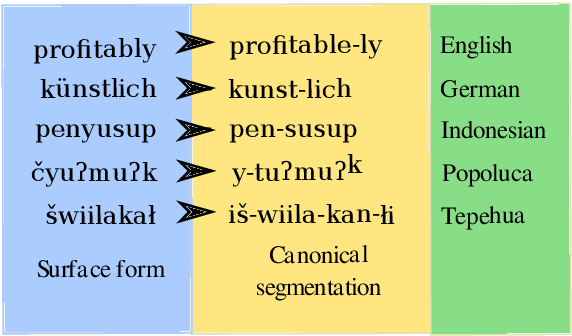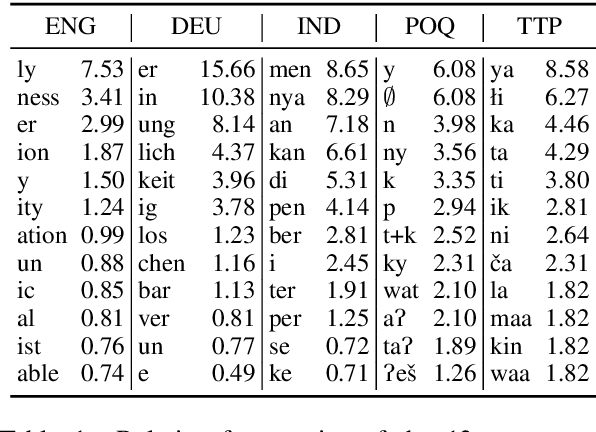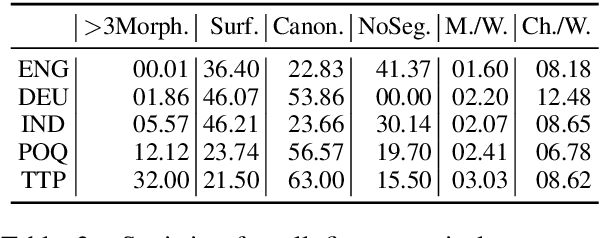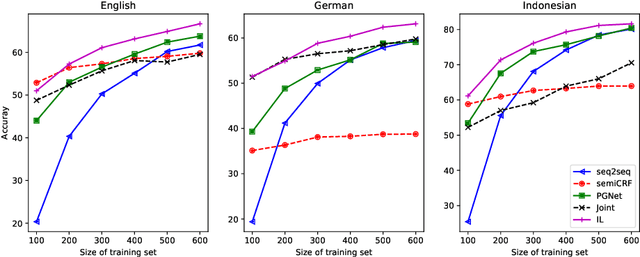Tackling the Low-resource Challenge for Canonical Segmentation
Paper and Code
Oct 06, 2020



Canonical morphological segmentation consists of dividing words into their standardized morphemes. Here, we are interested in approaches for the task when training data is limited. We compare model performance in a simulated low-resource setting for the high-resource languages German, English, and Indonesian to experiments on new datasets for the truly low-resource languages Popoluca and Tepehua. We explore two new models for the task, borrowing from the closely related area of morphological generation: an LSTM pointer-generator and a sequence-to-sequence model with hard monotonic attention trained with imitation learning. We find that, in the low-resource setting, the novel approaches outperform existing ones on all languages by up to 11.4% accuracy. However, while accuracy in emulated low-resource scenarios is over 50% for all languages, for the truly low-resource languages Popoluca and Tepehua, our best model only obtains 37.4% and 28.4% accuracy, respectively. Thus, we conclude that canonical segmentation is still a challenging task for low-resource languages.
 Add to Chrome
Add to Chrome Add to Firefox
Add to Firefox Add to Edge
Add to Edge